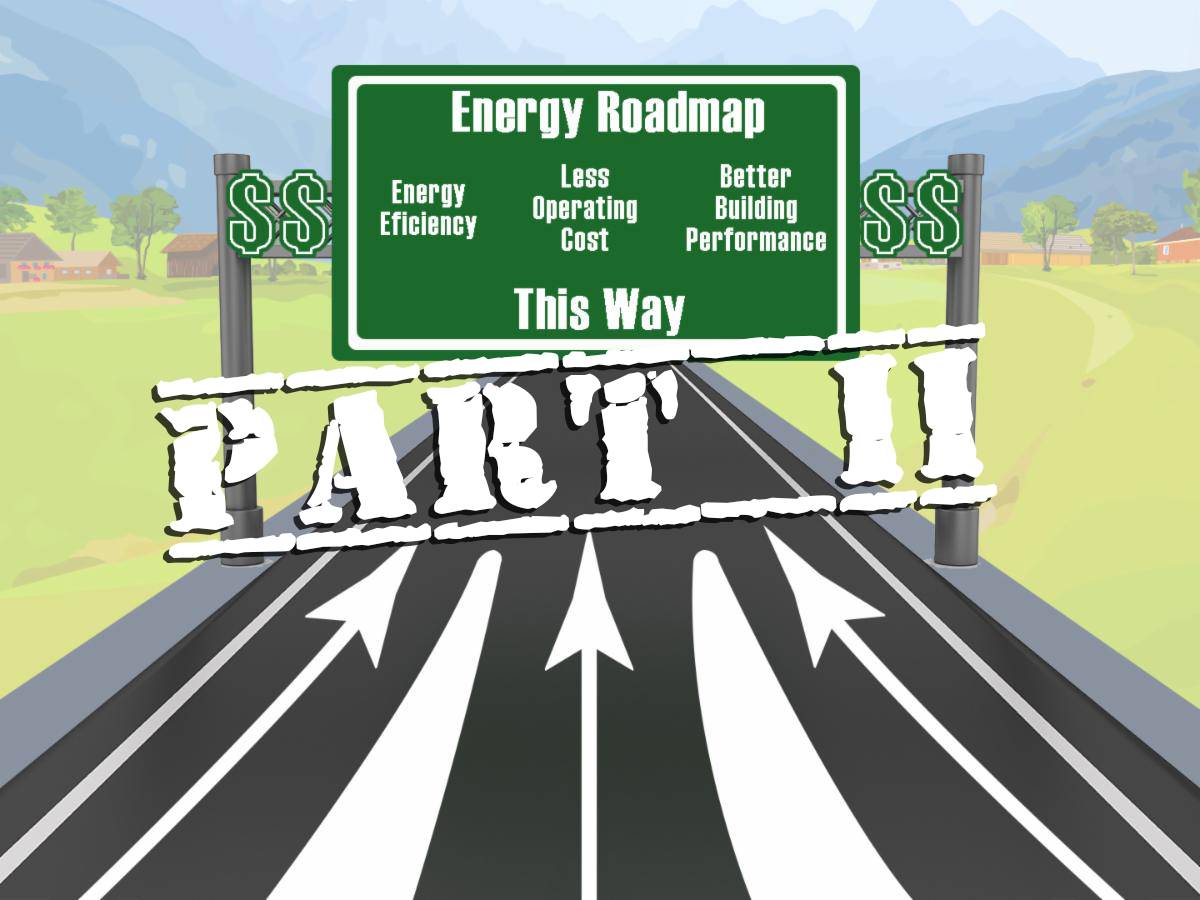 Last month’s article outlined the five major components of a comprehensive energy roadmap and described the first two topics: baselines and benchmarks and establishing goals. This month, we address implementation strategies, budgeting and monitoring performance.
Last month’s article outlined the five major components of a comprehensive energy roadmap and described the first two topics: baselines and benchmarks and establishing goals. This month, we address implementation strategies, budgeting and monitoring performance.
Implementation tools: To pursue the owner’s goals, studies should be conducted with various measures identified through facility condition assessments (FCA), retro-commissioning (RCx) and energy audits.
An FCA examines major existing systems, evaluating their conditions and anticipated lifespans. Depending on the scope, an FCA may include estimates that assist in developing capital budgets for identified repairs, replacements and renovations. RCx provides a more thorough investigation of an energy-consuming system, evaluating its operation and efficiency.
Energy audits are used to identify energy conservation measures (ECM), targeted opportunities to reduce consumption and increase energy efficiency. Upgrading equipment, improving the envelope thermal performance and tailoring control strategies are commonly employed measures. An audit typically evaluates ECMs for their energy savings and associated paybacks, or returns on investment (ROI), to help the owner prioritize identified measures. An audit may also identify other potential system measures, which may improve indoor environmental quality, occupant comfort and productivity.
While addressing a facility’s energy-consuming systems is crucial, occupant behavior is also important. Engaging employees and the public to promote energy conservation and related sustainability initiatives can be valuable in integrating long-term change internally and in the community.
Budgeting energy-related projects: Capital investments related to energy systems should be identified for budgeting, along with their projected implementation schedule and ROI. These may include major mechanical and electrical system upgrades, the incorporation of renewable energy and conversions to alternate fuel sources.
When developing capital budgets for large renovations, various sources for funding should be investigated. The roadmap developers should explore tax incentives for renewable energy, federal grant programs and utility rebate programs.
Tracking progress: The final component of an energy roadmap is often overlooked, with the assumption that the project ends with the completed measures. However, tracking the performance of energy and environmental goals through measurement and verification (M&V) is key to verifying and reporting the benefits of the implemented measures. This helps justify the investments and tracks progress toward long-term goals in the roadmap. Underperforming initiatives may be adjusted to improve their performance and increase their savings.
Along with an M&V plan, creating an ongoing commissioning (OCx) program is essential to preserve the optimized system performance for the facility’s systems. An OCx program often incorporates a preventative operation and maintenance plan and may include monitoring-based commissioning, periodic performance retesting and data trending to ensure consistent and optimal efficiency.
A comprehensive energy roadmap provides an owner with a benchmark of his facility’s current energy needs, helps establish energy goals and outlines the implementation, budgeting and monitoring tools to achieve those goals. Finally, once established and accepted, an energy roadmap should be reviewed every three to five years for required updating.
Do you need help with an energy roadmap? Contact Robert Knoedler at rknoedler@hanson-inc.com or Imane El Ghazouani at ielghazouani@hanson-inc.com.